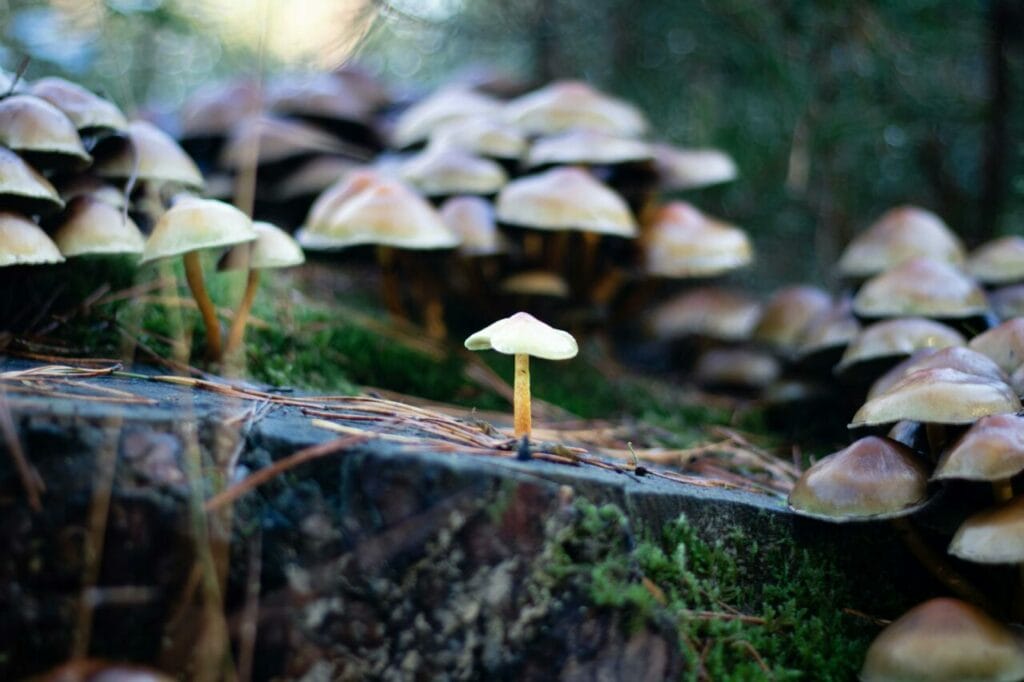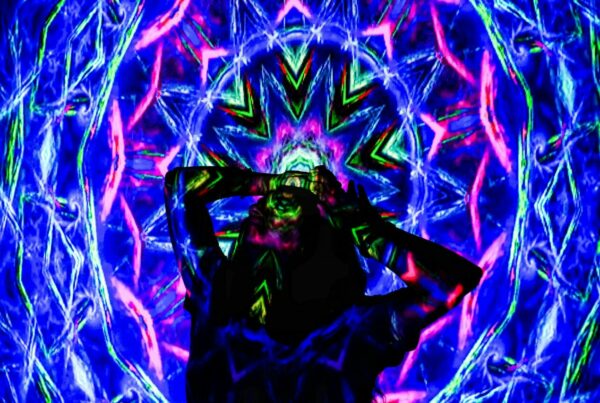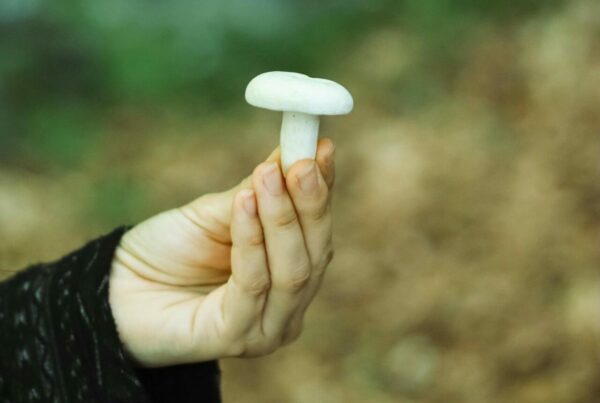Alzheimer’s Disease (AD) is a formidable neurodegenerative disorder with no cure currently known. The increasing incidence of this disease presents a substantial hurdle. In response, scientists are investigating better treatment approaches by considering both natural and manufactured alternatives.
Multiple clinical trials have highlighted the potential of serotonergic psychedelics such as LSD, DMT, and psilocybin, in the treatment of Alzheimer’s disease. For more captivating findings, we invite you to explore online resources or think about “procuring psychedelics online in Canada.”
[toc]
Psychedelics’ Part in Alzheimer’s Treatment
Conventional psychedelics exhibit promise in treating early-stage Alzheimer’s Disease (AD) or mild cognitive impairment (MCI) by fostering brain cell growth.
Psychedelics may promote neural plasticity for learning and memory by targeting specific brain receptors. This could potentially curb, or even reverse, the neurodegenerative effects of AD. In addition, psychedelics could help relieve depression and anxiety, which are frequently experienced by AD patients, by eliciting positive psychological impacts.
There remain doubts about how psychedelic treatments operate. Some suggest that the profound effects from high-dose psychedelics, such as mystical experiences or a sense of self-dissolution, are key to obtaining psychological benefits. Others believe the answer lies in the biological changes induced by these substances. Both views may have merit.
Conventional psychedelics appear to aid the brain in adjusting and diminishing inflammation, even at lower doses. Consequently, low-dose treatments might be helpful for conditions like brain degeneration or migraines without producing significant mind-altering effects. Yet, for depression, anxiety, or addiction, the mind-altering effects seem essential, leading to introspection and behavioural shifts. Therefore, both low and high doses deserve further investigation for personalized therapy.
Impacts of Serotonergic Psychedelics
Serotonergic psychedelics, including LSD (lysergic acid diethylamide), DMT (dimethyltryptamine), and psilocybin (found in magic mushrooms), are gaining
There is growing enthusiasm for the potential therapeutic effects of certain substances on a range of mental health disorders.
Consequently, the serotonin receptors, renowned for their capacity to boost cognition and regulate neuroplasticity, are increasingly being considered as an encouraging field of interest in Alzheimer’s Disease (AD) research.
The pharmacological effects of these substances mostly arise from modifications they cause in the brain’s serotonin system, resulting in changes in perception, mood, and consciousness. The following points are derived from various studies that bolster this theory:
- Specifically, the 5-HT2A subtype of the receptors impact the gene expression of neuroplasticity-enhancing neurotrophins in brain areas impacted by AD.
- These receptors govern cortical signalling, which is vital for cognition, memory, and synaptic plasticity.
- Even though serotonin receptors are distributed in neurons in an atypical manner, they play a role in neural development, regeneration, and plasticity.
Significant Research Findings
- Serotonergic psychedelics have shown potential in alleviating aspects of AD pathology by promoting neuroplasticity.
- Traditional psychedelics influence neurotransmission, stimulate synaptic remodelling, and boost factors that aid neuronal survival.
- Specific psychedelics, such as muscimol and Sig-1R agonists, may reduce the neurotoxicity associated with AD progression.
- Traditional psychedelics activate pathways in brain areas affected by AD, suggesting they might have the potential to slow down or even reverse brain degeneration.
- Magic mushrooms containing psilocybin initiate neural plasticity, stimulating neurogenesis and inducing lasting changes in brain circuits.
- Psychedelics improve brain connectivity by targeting receptor genes and triggering changes in neurons and networks.
Clinical research reveals that both classic and non-classic psychedelics derived from magic mushrooms affect various biological processes in the brain. These impacts include prompt changes in gene expression and substantial alterations in brain structure and function.
Psychedelics interact with receptors such as serotonin, sigma, NMDA, and GABA, resulting in increased synaptic plasticity and brain revitalisation. Therefore, psychedelics could potentially have positive effects on behaviour, memory, and cognition, suggesting they may be promising treatment options for AD and related disorders.
Buy Psychedelic Products Online in Canada
Welcome to our online marketplace, featuring a wide selection of psychedelic items from British Columbia, Canada. We are a trusted medicinal mushroom dispensary and suggest starting your exploration with us if you’re considering microdosing magic mushrooms.
- LSD
LSD, a man-made drug, is derived from ergot, a type of fungus that grows on rye grains. This psychoactive compound can change perceptions, feelings, and thoughts even when used in small amounts.
Excessive consumption of LSD can lead to severe hallucinations, skewing your perception of time and space. Be careful, as products sold as LSD might be other drugs like NBOMe or members of the 2C drug family.
| Product | Kittease – Ketamine Microdose Troche (30x50mg) | Zenly – LSD Gel Tabs – 600ug (100ug Per Tab) | Zenly – LSD Gummies – Sour Zen Berry – 200ug (100ug Per Gummy) |
| Purposed Use | Stress, depression, pain control, PTSD, OCD, job-related stress, performance anxiety, insomnia, addiction. | Remarkable experiences | Remarkable experiences |
| Dosage | 50mg per tablet / 30 tablets per pack – 1.5 grams of ketamine per pack | 600ug total/6 Tabs (100ug/Tab) | 200ug total/2 Gummies (100ug/Gummy) |
| Recommended Usage | Consume one full troche | Take one full tab for the full effect. Wait at least 2 hours before consuming another. | Ingest one full gummy for the complete effect. Allow at least 2 hours before eating another. |
| Advantages | Quick action with minimal risk, enhanced receptivity, ideal for self-reflection and cognitive improvement. | Accurately measured dose for the perfect trip, lab-verified | Accurately measured dose for the perfect trip, lab-verified |
- Magic Mushrooms
Over 180 species of mushrooms are known to contain psilocybin and psilocin, compounds celebrated for their therapeutic benefits and positive effects on mental health.
Factors such as the type of mushroom, the specific cultivation batch, the quantity consumed, and personal tolerance levels can cause the effects to vary. Some people opt for microdosing to achieve subtle effects, while others ingest larger amounts for a deeper experience. The cultivation methods used can also influence the quality.
Blue Meanies, or Panaeolus cyanescens, are small dried mushrooms that flourish in warm tropical climates, often seen on cow and water buffalo dung. As they grow, they develop blue spots on their surface, which is how they got their name.
- These mushrooms have a high concentration of psilocybin and psilocin.
- They have a history of recreational use, particularly among the Balinese people who use them during celebrations and for artistic inspiration.
- Tourists and travelers in places like Bali often favor them due to their hallucinogenic properties, which can lead to feelings of happiness, hallucinations, joy, and intense laughter.
- DMT
DMT, a potent hallucinogenic compound, is found in certain plants such as Psychotria viridis and Chacruna. Often dubbed as the “spirit molecule,” these controlled substances can produce deep psychedelic experiences. They offer a short but highly intense journey characterized by colorful visual and auditory hallucinations.
| Product | Dream Machine – Vape Cartridge – DMT 1ml | Integral Alchemist – ACACIA Changa Pre-Roll | Integral Alchemist – Mimosa- 1ml DMT Vape Cart |
| Description | Explore hyperdimensional realms with DMT. | Experience effects akin to ayahuasca, combining a mix of herbs and DMT. | Set off on a journey of mystical visions and spiritual revelations with DMT. |
| DMT Content | 1g | About 90mg | 1ml |
| Instructions | Preheat the cartridge and inhale | Consume the pre-roll at a pace that suits you. | Inhale the vapor for immediate impact. |
| Effects | Intense hallucinations, altered state of consciousness. | Visual psychedelic experience, prolonged duration. | Psychological awakening, euphoria, significant changes in viewpoint. |
| Duration | Varies per individual | Can last up to 1 hour | Can last up to 30 minutes |
Long-Term Implications of Psychedelic Use
Present studies focus on understanding the long-term consequences of consuming psychoactive substances. Although understanding in this field continues to evolve, the phrase “long-term effects” signifies any lasting changes in cognition, emotion, or memory after prolonged use of psychedelics.
The examination of psychedelics’ long-term effects is complex. Some studies cite potential mental health benefits, while others warn of possible risks, such as the onset of psychosis.
Despite the intricacies, researchers persist in their efforts to understand the effects of prolonged psychedelic use on mental health. They conduct thorough research, observing individuals over lengthy periods to collect more accurate data.
Purchase Cannabis from a Licensed Vendor
Research indicates a significant shift in Alzheimer’s disease treatment, suggesting that psychedelics could fundamentally change how we manage brain disorders. Experts believe that the therapeutic use of these substances could completely transform Alzheimer’s therapy, offering renewed optimism to numerous patients and their families.
For premium products, choose a licensed vendor such as Shroom Delivery Toronto Canada. Offering a wide range of cannabis products, including flowers, edibles, concentrates, and more, Shroom Delivery Toronto Canada ensures genuine, lab-verified items that adhere to strict food and drug regulations.
Order shrooms online today.
Frequently Asked Questions
How do psychedelics differ from other substances typically used in Alzheimer’s treatments?
Psychedelics distinguish themselves from traditional Alzheimer’s medicines through their therapeutic approach and effects. They promote new neural connections by targeting the brain’s serotonin system, facilitating profound psychological experiences that enhance emotional health.
Unlike standard drugs that primarily manage symptoms, psychedelics are being assessed by Health Canada for their sustained benefits and comprehensive treatment approach, which includes therapy.
Research into the use
The potential of psilocybin in treating conditions like obsessive-compulsive disorder and its safety characteristics, particularly its ability to prevent multi-system organ failure, make it distinctive from conventional controlled substances.
Can psychedelic-assisted therapy be a viable treatment for end-of-life distress in Alzheimer’s patients?
Psychedelic-assisted therapy could provide substantial benefits for Alzheimer’s patients who are critically ill and struggling with the imminent end of their lives.
- It offers emotional relief. This therapy has been observed to alleviate feelings of anxiety and depression in certain individuals, particularly those who are critically ill. This could potentially be beneficial for patients with Alzheimer’s as well.
- Generally safe when supervised. Psychedelics like these, when used in a secure environment and under the supervision of a professional therapist, are generally harmless and well-tolerated by most individuals.
- Potentially improves quality of life. An emotional uplift could make a significant difference for an Alzheimer’s patient, even if there is no improvement in their memory issues.
- Further research is required. While this therapy shows promise, additional studies are needed to validate its safety and effectiveness for Alzheimer’s patients, especially those in the late stages of their lives.
How long does a psychedelic therapy session for Alzheimer’s patients last?
- Preparation Phase. During this phase, one or two sessions are held, each lasting between 1 to 2 hours. These sessions aim to prepare the patient for the upcoming experience, establish expectations, and build trust with the therapist.
- Main Psychedelic Session. This critical session, during which the patient consumes the psychedelic substance, typically lasts between 4 to 6 hours. The patient spends this time in a controlled environment, often lying down with eye shades on and listening to music, while therapists closely monitor them.
- Integration Phase. Follow-up meetings are held after the session to help the patient understand and integrate their experience. These sessions generally last 1 to 2 hours each, with the total number of sessions varying.
Also, consider checking out:





